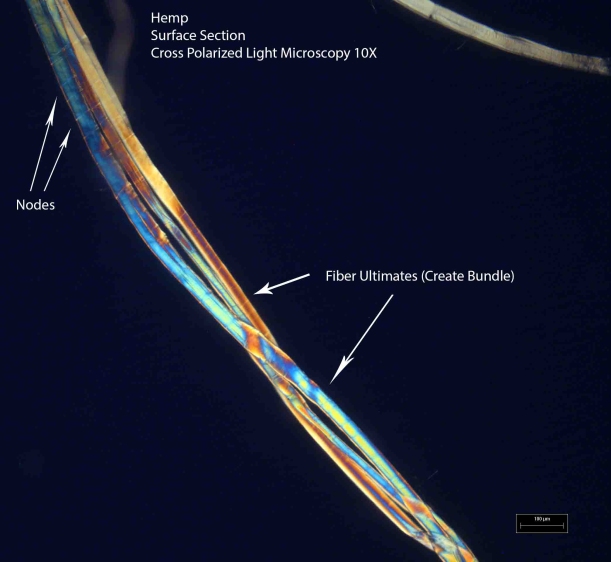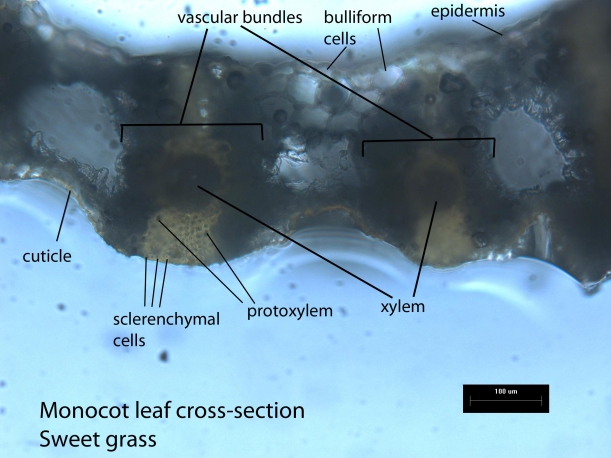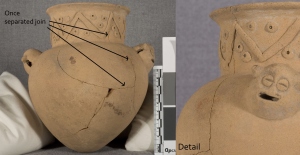Here at the UCLA/Getty Program, we’re gearing up for the International Symposium on Archaeometry (ISA), taking place May 19-23. This year, the ISA is being held at both the Getty Villa and at UCLA, organized by UCLA/Getty Program chair Dr. Ioanna Kakoulli and Dr. Marc Walton, senior scientist at NU-ACCESS (and formerly a scientist at the Getty Conservation Institute). Our program is well represented at the conference, with several posters and paper presentations and faculty chairing various sessions.
If you’re attending the conference, make sure to check out the presentations below by the UCLA/Getty crew. You can find more information on the conference here and the schedule and abstracts here. We’ll be posting pictures on our Facebook page so make sure to check out the album ISA 2014 throughout the week. We’ll also be posting on our twitter account @UCLAGettyCons using the hashtag #isa2014.
POSTER SESSION I
Monday, May 19 2:30-4:30, Getty Villa
Provenance Study of Obsidian Artifacts from the Fowler Museum Collection (UCLA) using a Handheld X-ray Fluorescence Spectrometer
Kristine Martirosyan-Olshansky1, Christian Fischer1 and Wendy Teeter2
1. Cotsen Institute of Archaeology, UCLA, Los Angeles
2. Fowler Museum, UCLA, Los Angeles
Over the past few decades, research on geochemical characterization of obsidian archaeological artifacts and geological samples from the greater American Southwest has been extensive, primarily for provenance purposes (Shackley, 1995; Ambroz et al 2001; Eerkens and Rosenthal, 2004; Ericson et al., 2004; Eerkens et al., 2008). Using different analytical techniques, such as neutron activation analysis (NAA), inductively coupled plasma mass spectrometry (ICP-MS), and laboratory and handheld X-ray fluorescence (labXRF and pXRF), the elemental fingerprint of obsidian artifacts can be established and correlated to known geological sources. This paper presents preliminary results for the geochemical characterization of an obsidian assemblage from the Fowler Museum collections consisting of one hundred fifty-six obsidian samples from various sites in California. The assemblage was analyzed with a Bruker handheld XRF to determine the number of groups with different geochemical signatures. Data were compared to \geological and reference samples from known California, Arizona, and Eastern Oregon sources in an attempt to assign individual groups to specific obsidian sources. Using elements bivariate plots and multivariate statistics, and beside several outliers, six distinct obsidian groups were identified based primarily on the concentrations of iron (Fe) and some trace elements, in particular strontium (Sr), yttrium (Y), zirconium (Zr) and Niobium (Nb). Although obsidian source attribution remains challenging for such a diverse assemblage, one artifact group could be confidently assigned to the Obsidian Butte source in San Diego County while a large number of samples from obsidian-rich northern California sites cluster well with sources located within the Coso volcanic mountain range in central-eastern California. Finally, the results for these groups are discussed in terms of artifacts spatial and temporal distribution which provide useful insight on procurement patterns for this material in California.
References
Ambroz, J.A., Glascock, M.D. and Skinner, C.E., 2001. Chemical Differentiation of Obsidian within the Glass Buttes Complex,
Oregon. Journal of Archaeological Science, 28, 741-746.
Eerkens, J.W. and Rosenthal, J.S., 2004. Are obsidian subsources meaningful units of analysis?: temporal and spatial patterning of subsources in the
Coso Volcanic Field, southwestern California. Journal of Archaeological Science, 31, 21-29.
Eerkens, J.W., Spurling, A.M. and Gras, M.A., 2008. Measuring prehistoric mobility strategies based on obsidian geochemical and technological
signatures in the Owens Valley, California. Journal of Archaeological Science. 35, 668-680.
Ericson, J. E. and Glascock, M.D., 2004. Subsource Characterization: Obsidian Utilization of Subsoures of the Coso Volcanic Field, Coso Junction,
California, USA. Geoarchaeology: An International Journal., 19, 8, 779-805.
Shackley S.M., 1995. Sources of Archaeological Obsidian in the Greater American Southwest: An Update and Quantitative Analysis. American
Antiquity, 60, 3, 531-551.
The Technology of Late Bronze Age/Early Iron Age Glass in the Mediterranean: Analytical Studies of Vitreous Materials from Lofkënd
Vanessa Muros,1,2 Nikolaos Zacharias2 and John K. Papadopoulos,3
1. UCLA/Getty Conservation Program, Los Angeles, CA, USA.
2. Dept. of History, Archaeology and Cultural Resources Management, Univ. of Peloponnese, Kalamata, Greece.
3. Cotsen Institute of Archaeology, UCLA, Los Angeles, CA, USA.
The application of archaeometric techniques to the study of archaeological glass has been critical to identifying how and where this material was manufactured. Despite the research that has been conducted to date, questions still remain about the raw materials used and the location of primary glass production centers, especially during the Late Bronze Age and Early Iron Age. Investigations of glass from sites such as Frattesina in Italy and Elateia in Greece have revealed new technological approaches that appear during this time period and possibly the identification of new regions where glass was produced. This challenges the idea that glass in the Mediterranean was imported from either Egypt or the Near East. Only with additional investigations of ancient glass from this region and time period can technology and production be better understood. This paper aims to add to the current body of knowledge of LBA/EIA glass production by presenting the study of vitreous materials from the tumulus of Lofkënd in southwestern Albania. In this ongoing project, several analytical techniques (XRF, SEM-EDS, ICPMS, SIMS) were employed to identify the technology of a group of 12th-9thc. BC glass and faience beads. The data obtained on trace elements and stable isotopes will allow for the method of manufacture of these materials from Lofkënd to be identified and to determine where the glass and faience was made. The results will provide crucial information to our understanding of ancient technology, trade, and glass manufacture during the transition from the Bronze to the Iron Age, and the relation of Lofkënd to production centers in the Mediterranean, Egypt and the Near East
POSTER SESSION II
Wednesday, May 21 2:30-4:30 California NanoSystems Institute (CNSI), UCLA
Application of VPSEM-µRS for SERS analysis of archaeological textiles
Diana C. Rambaldi1, Sergey V. Prikhodko2, Vanessa Muros3, Elizabeth Burr3, and Ioanna Kakoulli2,3
1. Conservation Center, Los Angeles County Museum of Art, 5905 Wilshire Blvd, Los Angeles, CA 90036, United States.
2. Department of Materials Science and Engineering, University of California, Los Angeles, 410 Westwood Plaza, 3111 Engineering V, Los Angeles, CA 90095-1595, United States.
3. UCLA/Getty Conservation Program, Cotsen Institute of Archaeology, University of California, Los Angeles, 308 Charles E. Young Drive North A210 Fowler Building/Box 951510, Los Angeles, CA 90095-1510, United States.
The site of Huaca Malena on the coast of southern Peru is a platform and cemetery of the Wari state from the Middle Horizon period (AD 700 -1100). The cemetery has yielded mummy textiles, some of which are typical for the region, and others with motif traditions indicative of the Sierra Andes of southeast Peru. It is unclear if this indicates migration, exchange, or transmission of aesthetics. Analytical methods for the identification of organic colorants on archaeological textiles can offer a way to retrieve information from these delicate artifacts. Among other analytical methodologies, Surface-Enhanced Raman Spectroscopy (SERS), achieving single molecule detection, has recently emerged as a powerful technique for the identification of colorants from size-limited and irreplaceable archaeological materials1. For direct, extractionless SERS analysis of colorants on textiles, silver nanoparticles (AgNPs) are deposited on a single fiber and SER spectra are acquired using a micro-Raman spectrometer (μRS)2. Since the deposition of AgNPs is a crucial step to generate the SER effect, Scanning Electron Microscopy (SEM) appears to be an ideal tool to evaluate the AgNP coverage and locate suitable areas for successful and reproducible analysis.
In this study, direct, extractionless SER analysis of organic colorants on single fibers was performed for the first time using a μRS interfaced with a variable pressure SEM (VPSEM). An alpaca fiber dyed with Peruvian cochineal and a wool fiber dyed with Indian madder were treated with a silver colloid and introduced in the SEM chamber. The high resolution imaging of SEM was used to select areas showing diverse deposition of AgNPs. SERS analyses were then directly carried out in these areas without moving the sample. The analysis of areas with a thick layer of nanoparticles or without nanoparticles resulted in low signal to noise ratio or no signal at all. Areas with a thin layer of deposited nanoparticles led to optimal reproducible spectra characteristic of the dye molecules. The results clearly illustrated the potential of this quasi non-destructive approach for the identification of different organic colorants while information can also be obtained on the AgNP coverage as well as the morphology of the fibers. This methodology will be applied to study collections of Peruvian archaeological textiles including that from the site of Huaca Malena. The application of VPSEM-µRS, coupled with energy-dispersive spectroscopy (EDS), will also provide a unique opportunity to study a variety of other archaeological materials including pigments, glazes, and glasses.
References
1. Pozzi, F., Poldi, G. De Luca, E., Guglielmi, V. Multi-technique characterization of dyes in ancient Kaitag textiles from Caucasus. Archaeol Anthropol Sci 2012, 4:185–197
2. Brosseau CL, Casadio F, Van Duyne RP: Revealing the invisible: using surface-enhanced Raman spectroscopy to identify minute remnants of color in Winslow Homer’s colorless skies. J Raman Spectrosc 2011, 42:1305–1310.
POSTER SESSION III
Thursday, May 22 2:30-4:30 California NanoSystems Institute (CNSI), UCLA
Non-invasive Analysis of Chinese Blue-and-white Porcelain from Indonesia and the Philippines
Ellen Hsieh1 and Christian Fischer1
1. Cotsen Institute of Archaeology, UCLA, Los Angeles, USA.
Blue-and-white porcelain has been a symbol of Chinese material culture for the last seven centuries and has spread all over the world with high impact on other cultures. Export blue-and-white porcelain was usually manufactured in common kilns as opposed to the ware from official kilns reserved for imperial court use, rewards and diplomacy purposes. During the 16th-17th century, Jingdezhen and Zhangzhou were the two main production
centers from which blue-and-white was exported followingnewly established global trading networks. The distinction between products from these two centers is of prime importance for archaeological research because it relates to topics such as trade routes, value or class. However while the provenance of complete porcelain pieces can often be easily identified from stylistic and technology-related features, attribution of small sherds to specific production sites remains a challenging task that requires a more in-depth analysis of the material. During the last decades, most scientific studies have focused on ware from official kilns (Yu and Miao, 1996; Wu et al., 2000; Wen et al., 2007) and only recently, owing to archaeological excavations of common kilns at both sites, useful reference data became available (Wu, et al., 2007; Ma, et al., 2012) providing solid support for provenance studies (Dias, et al., 2013). In the research presented here, blue-and-white porcelain sherds from Banten (Indonesia) and Visayan (Philippines) were analyzed with handheld XRF (p-XRF) and UV/Vis/NIR spectroscopy to acquire compositional data of the ceramic body, glaze and blue pigment and to evaluate the potential of these non-invasive and portable techniques at discriminating different source materials and production sites. Beside the expected use of Mn-rich cobalt ores for the blue pigment, p-XRF results have indicated that products from Jingdezhen and Zhangzhou common kilns can be successfully differentiated based primarily on the concentrations of some key trace elements such as Zr, Ti and Sr, most likely correlated to the composition of local raw material sources. The approach appears therefore promising and could offer a fast and cost-effective way for the characterization and sourcing of export blue and white porcelain sherds, especially for field analysis.
References
DIAS, I.M., PRUDÊNCIO, I.M., PINTO DE MATOS, M.A. and RODRIGUES L.A., 2013. Tracing the origin of blue and white Chinese porcelain ordered for the Portuguese market during the Ming dynasty using INAA. Journal of Archaeological Science 40, 3046-3057.
MA, H., ZHU, J., HENDERSON, J. and LI, N., 2012. Provenance of Zhangzhou export blue-and-white and its clay source. Journal of Archaeological Science 39, 1218-1226.
WEN, R., WANG, C.S., MAO, Z.W., HUANG, Y.Y. and POLLARD, A.M., 2007. The chemical composition of blue pigment on Chinese blue-and-white porcelain of the Yuan and Ming dynasties (AD 1271-1644). Archaeometry 49, 1, 101-115.
WU, J., LEUNG, P.L., Li, J.Z., STOKES, M.J. and LI, M.T.W., 2000. EDXRF studies on blue and white Chinese Jingdezhen porcelain samples from the Yuan, Ming and Qing dynasties. X-ray Spectrometry 29, 239–244.
A Preliminary Study on a Bronze Incense Burner Dated to the Eastern Jin Dynasty (317-420A.D.) in Nanjing City, China
Wang Xiaoqi1, Chen Dahai2, Wang Hong2 and Huang Xiaojuan3
1. Division of Archaeology, Department of History, Nanjing University, Nanjing, China.
2. Division of Archaeology, Nanjing Municipal Museum, Nanjing, China.
3. Conservation Lab, Archaeological Institute of Shaanxi Province, Xi’an, China.
One of the significantly archaeological discoveries in the year of 2011 in Nanjing city, China, was a grand brick chambered tomb dated to 317-420A.D., associated with many spectacular findings, such as golden ornaments, lacquer vessels, natural beeswax, celadon containers, alchemical pills, as well as other metal objects. In terms of historical documentation, the tomb location belonged to a cemetery of a high rank honorable family, mostly presumed to be well-known alchemical pioneers and active practitioners during the Eastern Jin Dynasty (317-420A.D.), a flourishing period of Taoism in ancient China. Aided by local archaeologists, a metal incense burner composed of a bird-formed lid, a body decorated with birds and human production shaped figurines and a plain basin-patterned base with an auspicious animal lying in the center, was chosen to be firstly explored by scientific methods. The whole vessel was well preserved and nearly intact, except base edge with a small-sized cut. Therefore, a tiny piece along the cut was sampled and analyzed by using x-ray fluorescence, μ x-ray fluorescence, metallographic microscopy, as well as scanning electron microscopy coupled with EDS to determine the composition, structure and manufacturing technology.
The semi-quantitative x-ray fluorescence analysis showed the sample mainly had copper, silica, tin, lead, iron and aluminum, with potassium, chlorine, calcium and phosphorus in minor. After detection by using μ x-ray fluorescence on a fresh section, map scanning revealed copper was mostly rich in the whole body, with minor evenly distributed tin and dottedly distributed lead, whereas other elements including silica, aluminum, potassium, chlorine, calcium and phosphorus were mainly found along the surface, which were attributed to the contaminants from the burial soils, and iron probably due to an adjacent iron ink slab. The metallographic observation unveiled a typical dendritic casting microstructure, but dendritic segregation was unobvious because of low tin content. The results conducted by scanning electron microscopy equipped with EDS were in consistent with metallographic observation and μ x-ray fluorescence result, especially EDS analysis indicated tin content was averagely over 4%, whereas lead was 1% to 2%. The experiments revealed the burner base was mainly made of copper by casting technology; tin was purposely added in; lead was probably spontaneously brought in from either copper ores or remelting process. It was different from local archaeologist’s original opinion, which was inclined to be an artifact made of pure copper, referenced from a historical record written by contemporaneous alchemists, one of whom was mostly presumed to be the potential tomb owner. However, deep investigation needed to be performed on diverse parts of the burner together with other excavated artifacts in order to seek more powerful evidence to provide a reasonable answer.






















![Female Nayarit figurine before treatment. Southwest Museum of the American Indian Collection, Autry National Center, Los Angeles; [2232.G.33]](https://uclagettyprogram.files.wordpress.com/2014/05/dsc0047.jpg?w=300&h=199)




